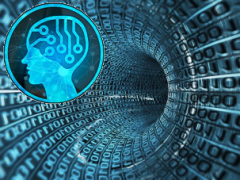Machine learning is the general term for computational methods used to process vast amounts of data in ways and speeds unimaginable for a team of humans. This field creates algorithms to provide insights based on features extracted from the data using statistics, linear algebra, and differential equations. It also gives us a structure with which we can combine information from many different types of modalities to give robust descriptions of problems.
We use machine learning to help answer interesting questions in research and development. Designing these models requires enormous amounts of data representative of the problem at hand to ensure they can be deployed. Thus much of what we do in working with machine learning focuses on acquiring a robust dataset so our algorithms can be trained properly. We have worked on a wide range of problems that required machine learning capabilities, including characterizing wave height for oil spill response, social media tracking and analysis, communication through ice floes in the Arctic, computer vision for automatically detecting birds in video, and natural language processing for improved customer support.

Data mining is the process of extracting useful, often hidden, information from vast amount of data. It can be applied whenever there exists far more data that human analysts could possibly process. The knowledge produced by data mining can provide benefits as varied as creating new Wall Street millionaires or next year’s World Series champions.
Machine learning is an application of artificial intelligence that creates algorithms derived from experience working with large data sets. It’s the design, study, and development of algorithms that permit machines to learn without human intervention. Data mining is sometimes involved in order to provide the most effective training data.